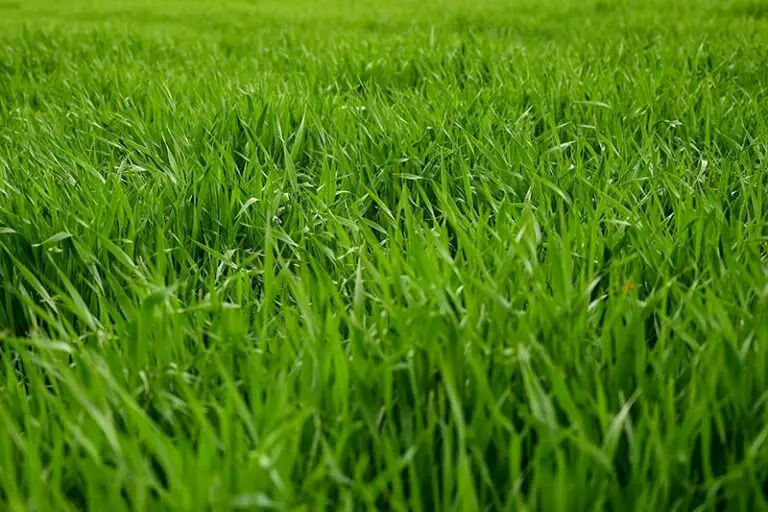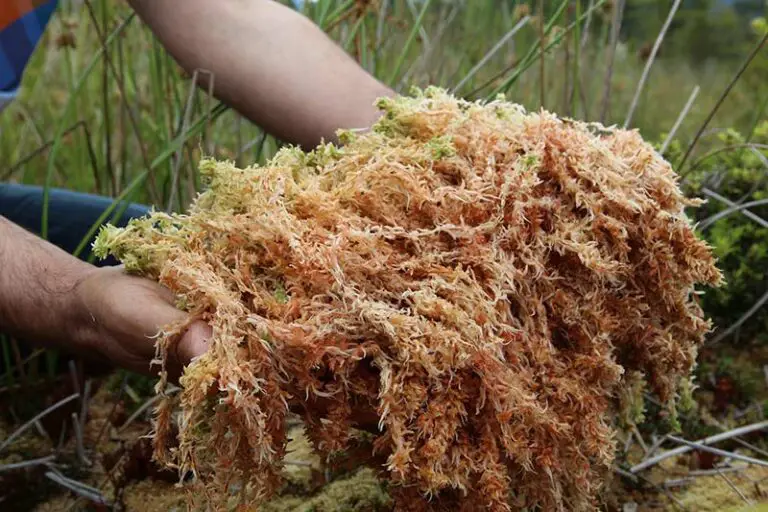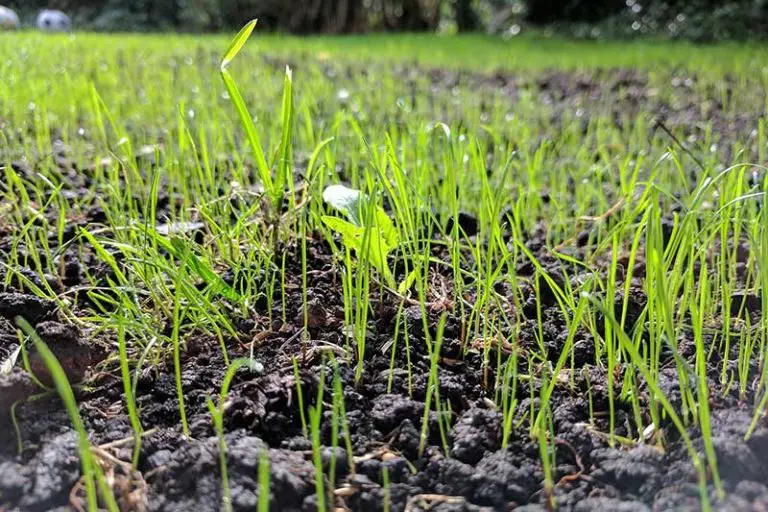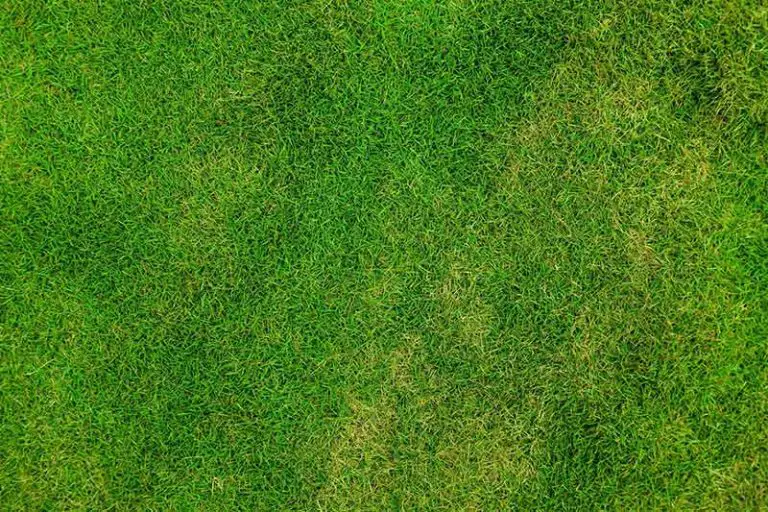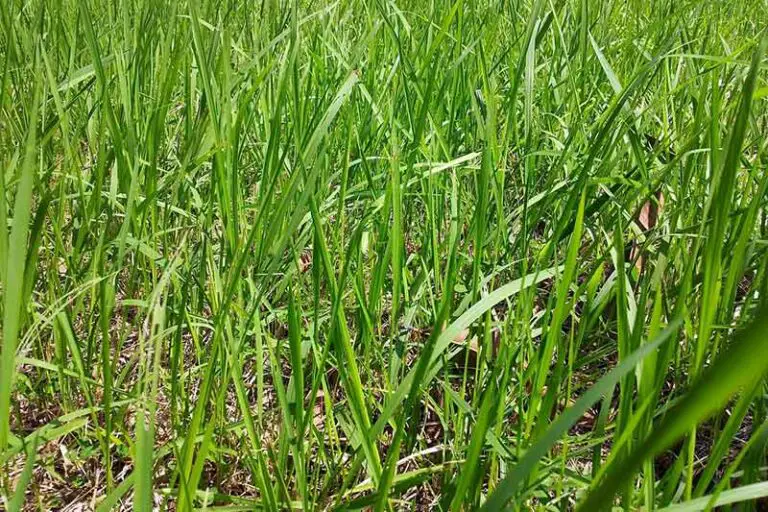Protecting Your Lawn from Car Damage
The best way to stop cars from driving or parking on your lawn is to create a physical barrier of some sort around your driveway or property line. However, if this isn’t a suitable solution, there are some measures you can take to protect your lawn from cars and other types of traffic.
To protect your lawn from cars, you should strengthen the grass by aerating the lawn, reducing moisture in the soil, and seeding with a traffic-hardy grass type. You can also reinforce your lawn by placing ground protection mesh, which is a plastic covering that will protect the grass from cars that regularly park in the same spot on the lawn.
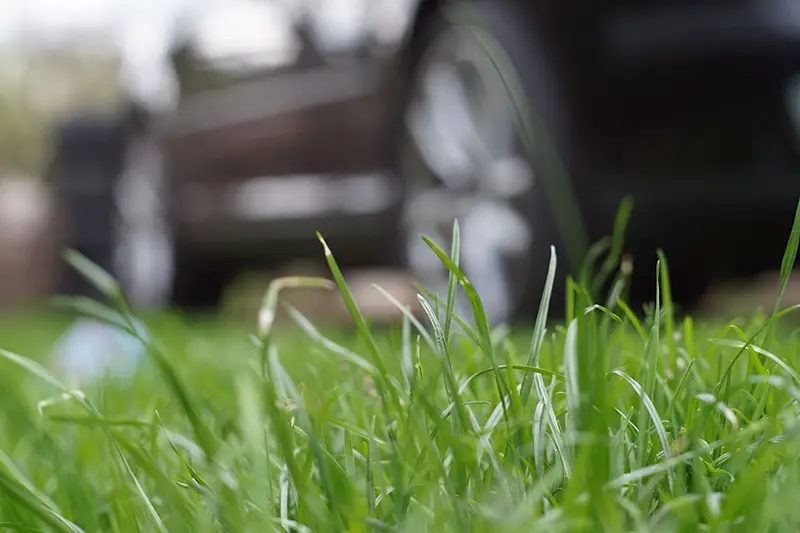
1. Seed Lawn with Traffic-Hardy Resistant Grass Types
Protect your lawn from cars by seeding your lawn with a hardy grass type. There are many different grass species, with some types being more resistant to traffic than others. You should reseed or overseed your lawn with a more durable grass type that will withstand the stress of traffic from cars, as well as foot traffic from pets and people.
For example, Kentucky Bluegrass, Hybrid Bermuda grass, and Zoysia grass are all hardy grass types that will withstand more traffic without tearing. These types of grass are those typically found on turf fields at sporting events due to their high level of durability.
You need to take a few factors into consideration when choosing which grass type to seed your lawn with. If you live in a northerly region, you should opt for a cool-season grass species such as Kentucky bluegrass. For those in the warmer southern regions, Zoysia or Bermuda grass would be a better choice. You should also consider how tall the grass type will grow in order to assess how often you’ll need to mow it.
Plant your grass seed at the right time and follow it up with a proper care routine, including watering and fertilizing. This will ultimately leave you with a lawn that looks great and withstands the stress brought on by traffic.
2. Aerate Soil in Lawn
Keeping your soil well-aerated is another way to protect your lawn from cars. When your lawn sees a lot of traffic, particularly from heavy vehicles like cars, the soil gradually becomes compacted. Compacted soil lacks the spaces necessary for water, air, and nutrients to circulate around your plant roots.
Without access to these essential substances in their soil, your grass plants will suffer. This will cause the grass to become weak, making it more susceptible to damage from cars, foot traffic, and other stressful conditions. Also, without aeration, lawns are more likely to develop a thick layer of thatch, the layer of dead plant matter that sits between the grass and the soil
It’s for these reasons that regular lawn aeration is key to having a healthy lawn that will be resistant to stress. You can aerate your lawn using a few different methods. Some gardeners aerate their lawn by walking over the area in aerating sandals; these are shoes with spiked tines that create holes in the lawn as you walk in them.
A better option is to use a core aerator, a piece of equipment that pulls small plugs of soil from the lawn. The holes break up compaction, and leaving the plugs on the lawn provides your soil with a free slow-release fertilizer as they break down. You can purchase a core aerator or rent one from your local hardware store.
3. Avoid Excessive Moisture in Lawn
Your lawn will be more vulnerable to damage from cars when it is overly moist. After rainfall or heavy irrigation, the grass is delicate and will tear very easily under stress.
Unfortunately, there’s no way to control the weather so a wet lawn is sometimes an inevitable situation. After it has rained, the best you can do is to try and avoid any traffic on the lawn where possible.
You can, however, adjust your watering routine to ensure you aren’t adding excess moisture to the lawn through irrigation. The best time to water your lawn is in the early morning or late afternoon. This depends on when your lawn gets the most traffic; hold off on irrigation until the lawn has undergone its use for the day. Doing so will give the lawn a chance to dry out properly before it is driven on again.
4. Lay Ground Protection Mesh on Lawn
You can protect your lawn from cars by laying protective mesh. Ground protection mesh is a covering made from thick, heavy-duty plastic that you can spread on a grassy area frequently used by vehicles. This mesh works to prevent turf damage by distributing the weight of the vehicle evenly over the area.
There are many different types of ground protection mesh that come in varying materials, colors, and densities. If your lawn sees consistent traffic from heavier vehicles, you should opt for a more heavy-duty mesh with smaller holes. If you only need the mesh as a preventative measure, a larger weave will suffice.
Installing Ground Protection Mesh to Protect Lawn from Cars
Ground protection mesh is relatively easy to install; you can place it straight over your existing lawn without needing to tear up any sections of the current turf. Before installation, mow the lawn so the grass is as short as possible, allowing the mesh to lay flat against the ground. Reinforce the mesh with U-pins after installing it to hold it in place. Take note that this method will work best in areas that are fairly flat and have strong, healthy grass.
Don’t worry if the mesh is initially visible, the grass will grow through the spaces and obscure it over time. During your grass’ period of active growth, the mesh should disappear almost entirely within 5 to 6 weeks after installation.

